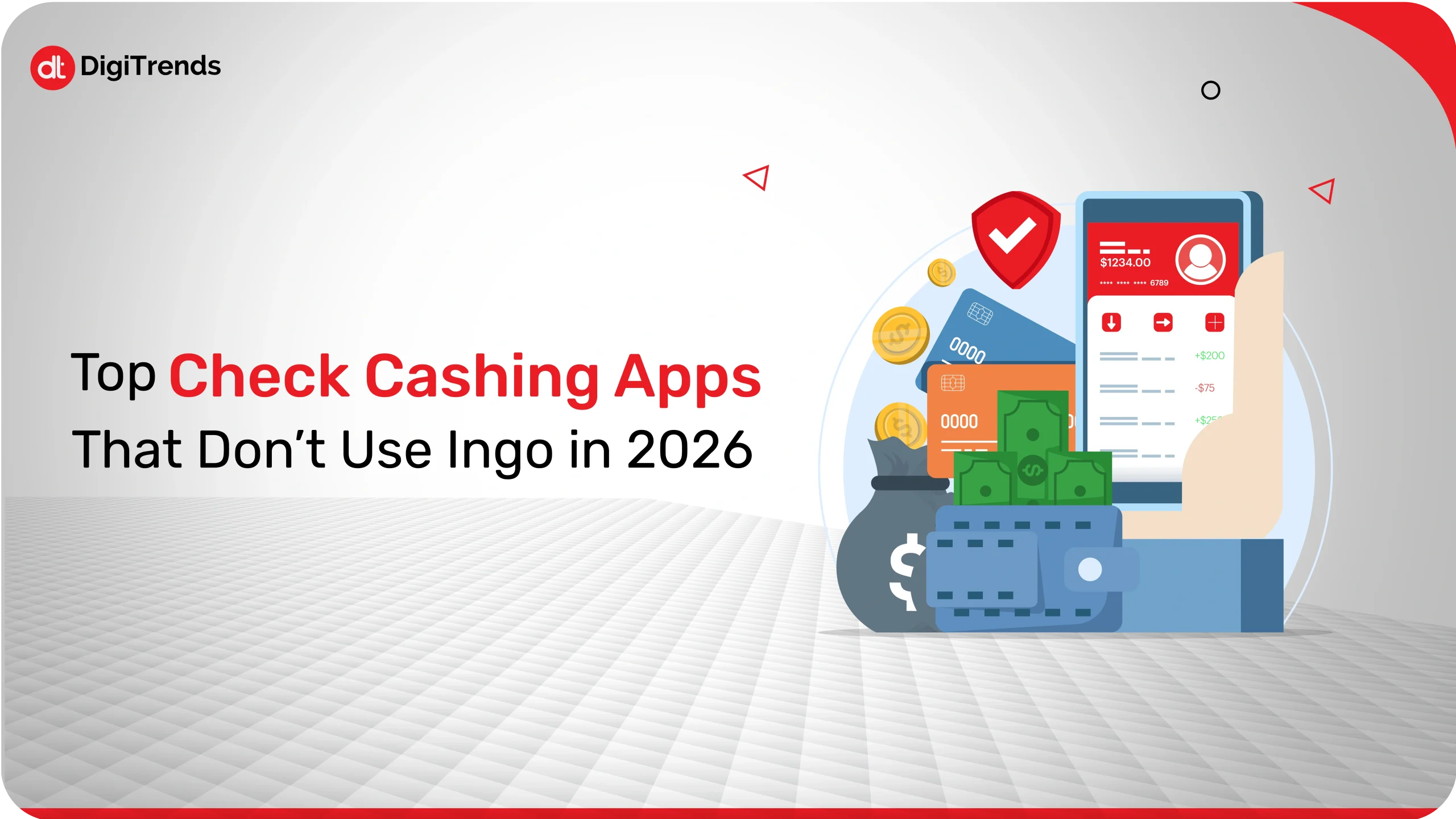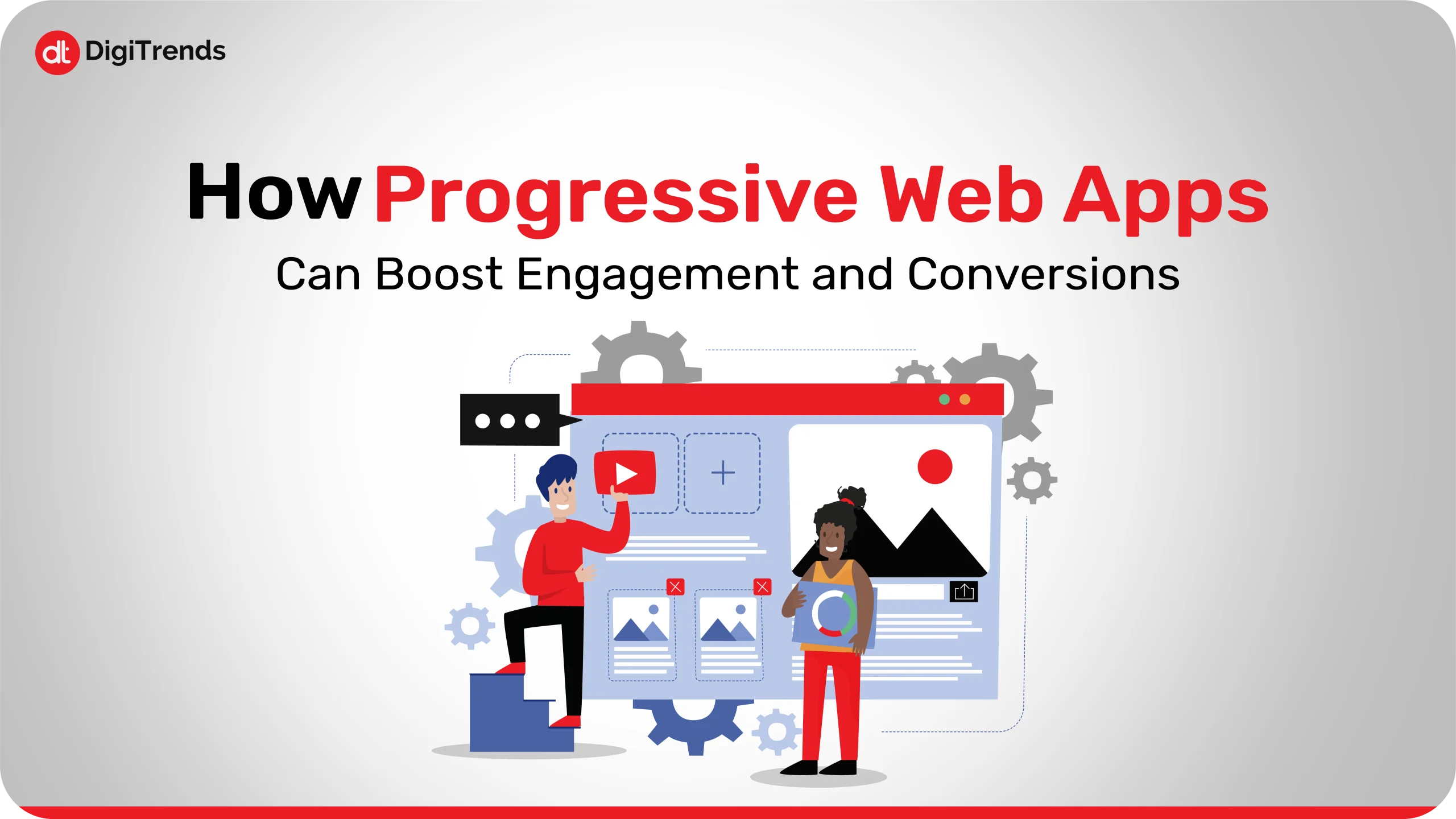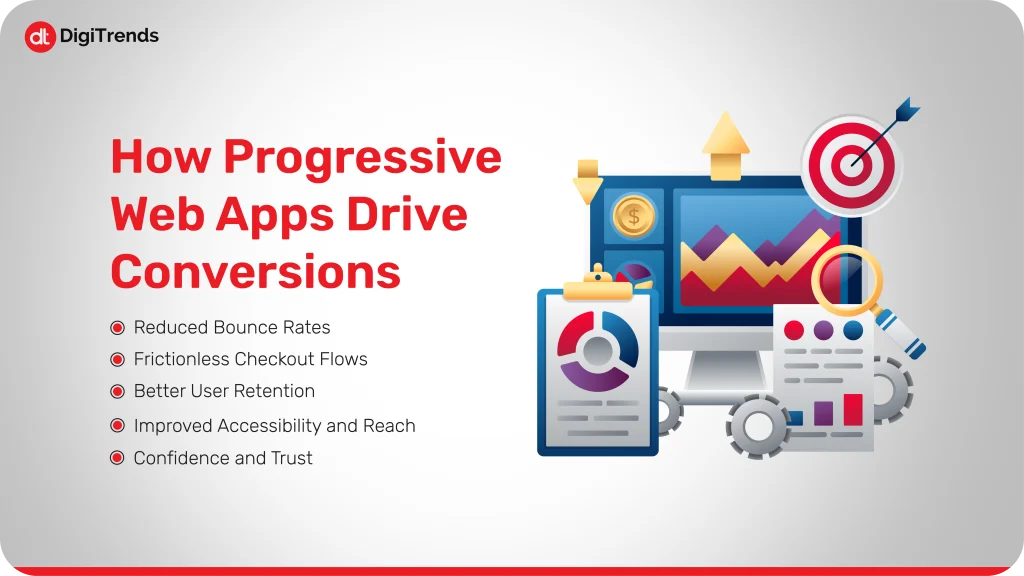
Top Check Cashing Apps That Don’t Use Ingo in 2026
Looking for an app where you can find a mobile check deposit with instant funds availability?. Explore the best check cashing apps in 2025.
Continue Reading
People nowadays expect websites to work as smoothly as the apps on their phones. No matter what the purpose is, from shopping to booking to browsing content, they want everything to be fast and reliable.
So, what’s stopping businesses from providing these fast and reliable experiences?
Native apps usually run smoothly, and web apps are easier to access, but what businesses struggle with is achieving a balance between a smooth experience and reliability.
That’s where Progressive Web Apps (PWA) come in.
These web apps can easily bridge the gap between websites and mobile apps. They are fast, smooth, and provide an experience similar to an app.
PWA is a good option because it allows faster load times, offline functionality, and can also keep users engaged. Many businesses consider PWA as an important digital strategy as it helps in increasing customer satisfaction, which later on increases conversions.
Let’s explore how progressive web apps are a better option and how they can enhance the user experience.
So what exactly is a progressive web app?
Well, you can think of a progressive web app as a website that operates like a native mobile app. You can open it in a browser, add it to your home screen, and even use it offline, but web technologies like HTML, CSS, and JavaScript are still used to build it.
You won’t have to install the PWAs; they basically work like a traditional website. Once these are loaded, they can catch data locally, so it can work even if the internet connection is poor.
Here’s what defines a PWA progressive web app:

A PWA uses modern APIs and service workers to deliver better performance and user experiences across different devices. It does not come under a separate product category, but you can think of it as a good mix of web design and web development.
Here’s why they stand out:
Progressive web apps combine the accessibility of websites with the engagement power of mobile apps, and they are also faster, lighter, and easier to maintain.
Nowadays, speed is one of the factors that decides digital success. Studies show that even a one-second delay in load time can cut conversions by up to 7%. That’s something businesses like e-commerce, Saas, and service-based platforms should be concerned about.
Progressive web apps can easily solve this issue as they allow loading instantly and responding quickly, even on low-end devices. They minimize data usage, reduce bounce rates, and encourage longer session durations. Users convert into customers when their experience on the site is effortless and speedy.
Here’s how businesses benefit from adopting PWAs:
PWAs use caching and service workers to pre-load resources, which makes the pages appear almost instantly. This enables smoother browsing for users, and when the browsing experience is smooth, there are chances of higher engagement and lower abandonment.
A PWA progressive web app can continue to function even without a network. This is a good thing for e-commerce stores or news platforms, because users can still browse products or read articles offline. This way, customer retention also increases.
In PWA, users can receive push notifications, use full-screen mode, and experience smooth transitions, just like they do in a mobile app, and that too without downloading a heavy native app. This helps increase the number of repeat visits and builds long-term loyalty.
Building a PWA saves the costs and efforts of developing separately for iOS and Android apps. This is why many startups and enterprises hire a progressive web app development company instead of maintaining multiple codebases.
Since PWAs are indexed like regular websites, they rank in search engines. It allows businesses to use their existing SEO strategy while offering an app-like experience, which is a win-win for visibility and performance.
Let’s have a look at some real brand examples of PWAs to better understand them.
Starbucks’ PWA allows users to browse menus, customize orders, and add items to the cart even without connectivity. Once they are back online, the data syncs automatically.
When Pinterest launched its PWA progressive web app, it saw a 40% increase in time spent on the site and a 44% rise in ad revenue per user. These positive results were due to a faster experience that led to more engagement in regions with low connectivity.
Uber’s PWA loads in less than 3 seconds even on 2G networks. The Uber PWA is simple and lets users book rides from any device without the app store, which is perfect for emerging markets.
Spotify’s browser version was changed into a PWA for consistent cross-device performance. It helps users load things faster, listen to music offline, and stream music smoothly directly from the web.
These examples prove that progressive web apps are a reliable way to increase engagement and conversions at scale.
What is the reason behind users engaging with PWAs more? Let’s find out:
Traditional websites depend heavily on network requests. Whereas PWAs hand and store assets locally. This makes interactions nearly instant, which reduces frustration and encourages exploration.
Like native apps, PWAs can send push notifications. That means businesses can reach users with personalized messages, abandoned-cart alerts, or special promotions, even when the browser isn’t open.
Users can also add a PWA progressive web app to their home screen, keeping the brand visible daily. This constant presence helps with strengthening engagement and brand recall.
A well-built PWA operates seamlessly, with no reloads, no jarring transitions. It’s smoother, faster, and more intuitive. A smooth user experience encourages users to interact longer and return frequently.
PWAs look and behave consistently on phones, tablets, and desktops. This uniform experience of the web app across different platforms helps build user trust and simplifies navigation across touchpoints.

A good engagement is the first step to gaining traction from users, and the next step is turning those users into customers. Here’s how progressive web apps impact conversion rates directly.
Think about it, if you get to use something that loads fast and is reliable, you will keep exploring on that webpage, right? And there will be more chances of you returning. This is why PWAs decrease bounce rates because even a small speed improvement can make a huge positive difference in conversions.
If an e-commerce business is looking to provide faster checkout to their users, then they should go for a PWA as it allows users to do a checkout with autofill, saved carts, and faster reloading. This makes the shopping experience smoother for users and makes them come back.
The users are reminded of discount offers and abandoned carts through push notifications just like the ones in apps. This reach, without having customers even download any app, makes the brand memorable.
PWAs are made for browsers, so users who don’t wish to download too many apps on their phone find it more accessible. With these web apps, businesses can have access to a wider audience, especially in areas where there are internet issues.
PWAs’ loading is secured through HTTPS. The lock symbol in the browser reassures users that their data is safe. This is important for conversion on payment or form-submission pages.
These are the advantages of a progressive web app, and when these are combined, they create a powerful platform for the conversion of users. It can help in increasing sales without demanding any extra effort from the user.
Building a good PWA does not mean only optimizing a website; it also requires expertise in both frontend and backend. Let’s have a look at the structure that a professional progressive web app development company usually follows:
A PWA development company will understand your business goals, user behavior, and the limitations of the existing website.
Companies create an experience similar to the experience of using a mobile app that has clear navigation and animations.
Companies use service workers to make the websites more reliable and faster. They handle things like background updates and caching, so pages can load quickly and keep working even without an internet connection.
The PWA should be able to work across browsers and stay functional offline, and load in 3 seconds.
Long-term success requires building a web app that provides continuous updates, analytics tracking, and performance optimization.
Organizations that specialize in progressive web app development bring both technical and strategic value. They will ensure the app aligns with your brand’s goals while maintaining a good performance and accessibility.
The concept of a PWA might sound simple, but building a fully optimized PWA requires experience. A progressive web app development company can ensure that caching, responsiveness, and offline capabilities work flawlessly across browsers and devices.
These teams also focus on integration, like linking PWAs with existing systems like CRMs, APIs, or e-commerce platforms. Companies can easily handle complex aspects like service worker setup, background sync, and push notification management. These are the areas where even small mistakes can impact performance or reliability.
Working with experts who provide progressive web app development services saves time, reduces risk, and ensures scalability. Whether you’re running a retail store, a media platform, or a booking service, professional development can help deliver consistent user experiences that will help enhance engagement and conversions.
The momentum behind progressive web apps isn’t slowing down. With support from Google, Microsoft, and other major players, browsers are continuously expanding what PWAs can do. Features like background updates, geolocation, Bluetooth, and payment integration are making them even more powerful.
For users, this means one thing: faster, lighter, more accessible apps. For businesses, it’s an opportunity to reach and retain customers without the traditional app-store bottleneck.
As the web continues to evolve, progressive web apps are set to become the default choice for companies that care about speed, engagement, and conversion.
Choosing the right team for progressive web app development can make all the difference between an app that just functions and one that drives measurable growth. DigiTrends has spent years refining how businesses connect with users through smart, scalable web solutions, and PWAs are a core part of that expertise.
What sets DigiTrends apart is its blend of technical depth and business understanding. The team doesn’t just build PWAs; they design experiences that keep users coming back. From e-commerce platforms that load instantly to advanced healthcare apps, every project is built around engagement and performance.
Here’s what you get when you work with DigiTrends:
For businesses ready to deliver faster, more engaging web experiences, DigiTrends isn’t just a progressive web app development company; it’s a partner focused on helping you turn digital traffic into loyal customers.

Adopting progressive web apps isn’t just about technology; it’s about understanding user behavior. People want immediate, reliable, and engaging experiences. PWAs make that possible while keeping costs manageable and performance high.
If you’re planning to modernize your web presence or improve conversion rates, exploring progressive web app development is a smart move. They combine the reach of the web with the power of mobile apps, and that combination is hard to beat.